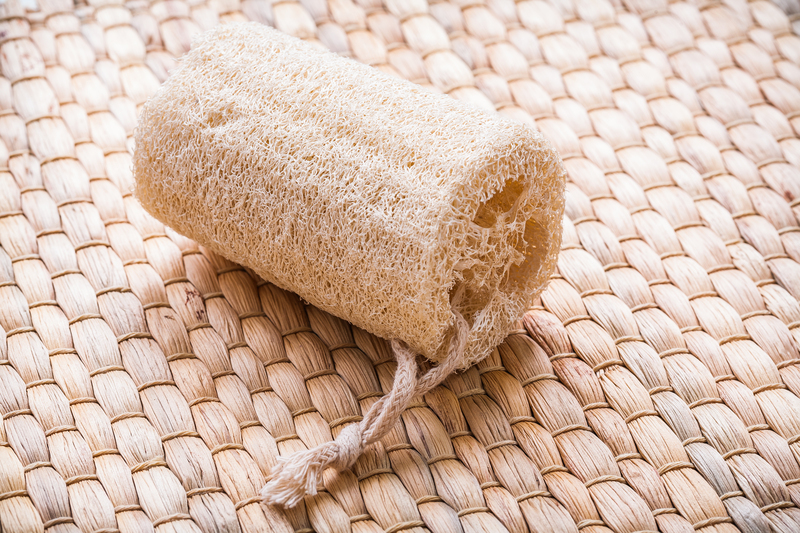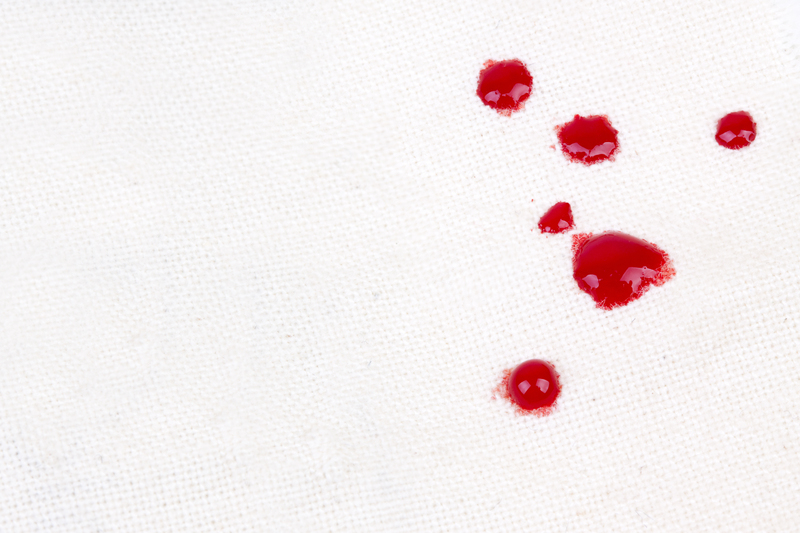Techniques for a Brilliant Jewelry Finish
Posted on 20/09/2025
Techniques for a Brilliant Jewelry Finish
Jewelry finishing plays a pivotal role in elevating the appearance and value of precious pieces. Whether you are a hobbyist, a professional jeweler, or someone who simply loves exploring the art of jewelry-making, mastering techniques for a brilliant jewelry finish is essential. In this comprehensive guide, we detail the diverse methods, tools, and expert tips needed to achieve a radiant, polished finish that makes every jewelry piece stand out.

Understanding Jewelry Finishing
The process of finishing jewelry is more than just the final touch--it ensures that a creation's beauty and quality shine. A good finish enhances not only appearance, but also comfort and durability. Let's explore the basics before delving into specific techniques.
- Improved Aesthetics - A brilliant finish allows gems and metals to reflect light more beautifully.
- Surface Protection - Proper finishing helps to protect jewelry from tarnish or corrosion.
- Comfort & Wearability - Smoothing out rough edges ensures jewelry is comfortable to wear.
- Value Addition - Professionally polished pieces fetch higher market prices.
The Main Stages of Jewelry Finishing
A jewelry finish typically comprises several essential stages:
- Cleaning and preparation
- Sanding and filing to remove imperfections
- Polishing to bring out the shine
- Buffing for a mirror-like reflection
- Optional: Plating or adding protective coatings
Different Techniques for a Brilliant Jewelry Finish
1. Hand Polishing Techniques
Hand polishing is one of the oldest and most rewarding techniques for attaining a high-quality jewelry finish. It allows for greater control and precision, especially on intricate designs.
Key methods:- Using Polishing Cloths: Specially treated cloths can be used to polish metals such as gold, silver, and platinum by removing surface tarnish and restoring shine.
- Application of Polishing Compounds: Compounds like rouge (for gold or silver) and tripoli are applied with a soft cloth or leather, providing a lustrous finish.
- Burnishing: This technique involves rubbing the metal surface with a smooth, hard tool (often steel or agate), which compresses surface particles for added brilliance.
This method is especially effective for small-scale and delicate pieces--think engagement rings or custom pendants--that demand attention to detail.
2. Machine Polishing Methods
For efficiency, uniformity, and speed, many jewelers turn to machine polishing. Modern technology enhances the brilliance of jewelry finishes exponentially.
Popular machine techniques include:-
Rotary Polishing Motors:
Using a variety of interchangeable wheels--felt, cotton, or abrasive--these machines spin at high speed to buff and polish metal surfaces, smoothing out scratches and imperfections. -
Tumblers:
Vibratory or rotary tumblers use a mix of abrasives and polishing media (such as steel shot or ceramic) to simultaneously clean and polish multiple pieces, producing a consistent finish. -
Ultrasonic Cleaners:
Ultrasonic waves pass through a cleaning solution, safely removing dirt and polishing residue even from the tiniest crevices.
Tip: Combine machine polishing with hand finishing for the most radiant and flawless results.
3. Surface Texturing for Unique Jewelry Finish
Not all brilliant jewelry finishes are mirror-smooth; sometimes a designer might want to highlight texture, contrast, or pattern.
Favored texturing techniques include:- Matte & Satin Finishes: Achieved using abrasive pads, fine sandpaper, or steel wool for a subtle, non-reflective surface.
- Hammered Finishes: Metal is gently struck with ball-peen hammers to create a hand-wrought, shimmering texture.
- Florentine & Brushed Patterns: Fine lines are engraved or brushed in a systematic pattern for a unique decorative effect.
Surface texturing adds personality and depth to your jewelry, making the piece both more tactile and visually striking.
4. Advanced Finishing Techniques: Electroplating & Coating
For a brilliant, long-lasting jewelry finish, sometimes the application of a new surface layer or coating is required.
- Electroplating: This electrochemical process deposits a thin layer of precious metal--such as gold, rhodium, or platinum--onto a base. This not only enhances luster and color but also provides extra protection.
- Lacquering & Varnishing: Protective coatings are often applied to silver and copper to prevent tarnish while maintaining shine.
- Enameling: Adding vibrant colored glass enamels through heat fusion can both protect and embellish your jewelry.
Remember: Advanced finishing techniques should be performed in well-ventilated environments with proper safety equipment.
The Tools and Materials You Need for a Professional Jewelry Finish
The right tools make all the difference in achieving a brilliant jewelry finish. Here's a quick rundown of essentials:
- Polishing wheels, mops, and brushes
- Sandpaper (various grits) and abrasive pads
- Files, burnishers, and rotary tools
- Polishing and cutting compounds
- Tumblers, ultrasonic cleaners, and steamers
- Protective gear (gloves, masks, and eye protection)
Each tool and material is suited to different stages and types of finish--understanding their use can dramatically improve your results.
Types of Jewelry Polishes & Compounds
- Tripoli Compound: Used for initial polishing to remove deeper scratches or casting marks.
- Rouge: Best for bringing precious metals to their highest possible shine.
- White Diamond or Super Shine: All-purpose compounds for both precious and semi-precious metals.
Make sure to match your compound and wheel with the type of metal you are finishing for the best results.
Steps to Achieve a Flawless Jewelry Finish
- Preparation and Cleaning: Thoroughly clean your jewelry piece to remove dirt, oils, and debris. Use a jewelry-specific cleaner or an ultrasonic bath for best results.
- Sanding and Filing: Smooth out casting marks, sprue stubs, or any surface irregularities with sanding sticks, emery boards, or fine files. Progress through multiple grits, going from coarse to very fine.
- Polishing: If using a rotary tool, start with a polishing compound to remove any remaining scratches. Work systematically, covering all surfaces evenly.
- Buffing: Use a clean, soft buffing wheel or cloth to bring your metal to a brilliant, mirror-like shine.
- Final Cleaning: Remove polishing residues with soap and water or a steam cleaner. A jewelry cleaning cloth can bring out the ultimate sparkle.
- Optional: Protective Coating or Plating: Finish with electroplating or a clear lacquer for enhanced longevity and brilliance.
Expert Tips for Maintaining a Beautiful Jewelry Finish
- Store jewelry properly: Use soft pouches or lined boxes to avoid scratches.
- Avoid chemicals: Remove jewelry when cleaning or swimming in chlorinated pools.
- Regular gentle cleaning: Keep your pieces looking brilliant by gently wiping with a soft cloth after each use.
- Professional polishing: Have treasured pieces professionally polished every year or two to restore their original brilliance.
- Handle with care: Avoid dropping or knocking jewelry against hard surfaces.
Common Jewelry Finishing Pitfalls and How to Avoid Them
Even experienced jewelers encounter finishing challenges. Here's how to avoid the most frequent mistakes:
- Uneven surfaces: Always work systematically and check your progress under good lighting.
- Over-polishing: Using too much pressure or spending too long in one spot can remove details and wear away metal.
- Residue left behind: Always thoroughly clean between stages to avoid compound buildup.
- Neglecting safety: Wear protective gear and ensure your workspace is well-ventilated.

The Artistry of the Perfect Jewelry Finish
Understanding and implementing techniques for a brilliant jewelry finish transforms any jewelry project from ordinary to extraordinary. Whether you favor a high-gloss shine, a soft satin effect, or an inventive textured look, the right combination of tools, materials, and skillful technique is key to achieving perfection.
At the core of every dazzling jewelry piece is a dedication to detail. Patience, practice, and knowledge of finishing techniques will allow your jewelry creations to shimmer with professional radiance, captivating all who see them.
Conclusion: Elevate Your Jewelry Craft With Perfect Finishing Techniques
Achieving a brilliant jewelry finish is as much about the journey as it is about the destination. By investing time in learning and practicing the wide array of finishing methods available, every jewelry maker--amateur or expert--can create pieces that sparkle with unforgettable allure and lasting quality.
Explore, experiment, and don't be afraid to combine techniques. Your next masterpiece may just be a polish away!
Remember: The true beauty and value of your jewelry lie not just in its design but in the excellence of its finish.




